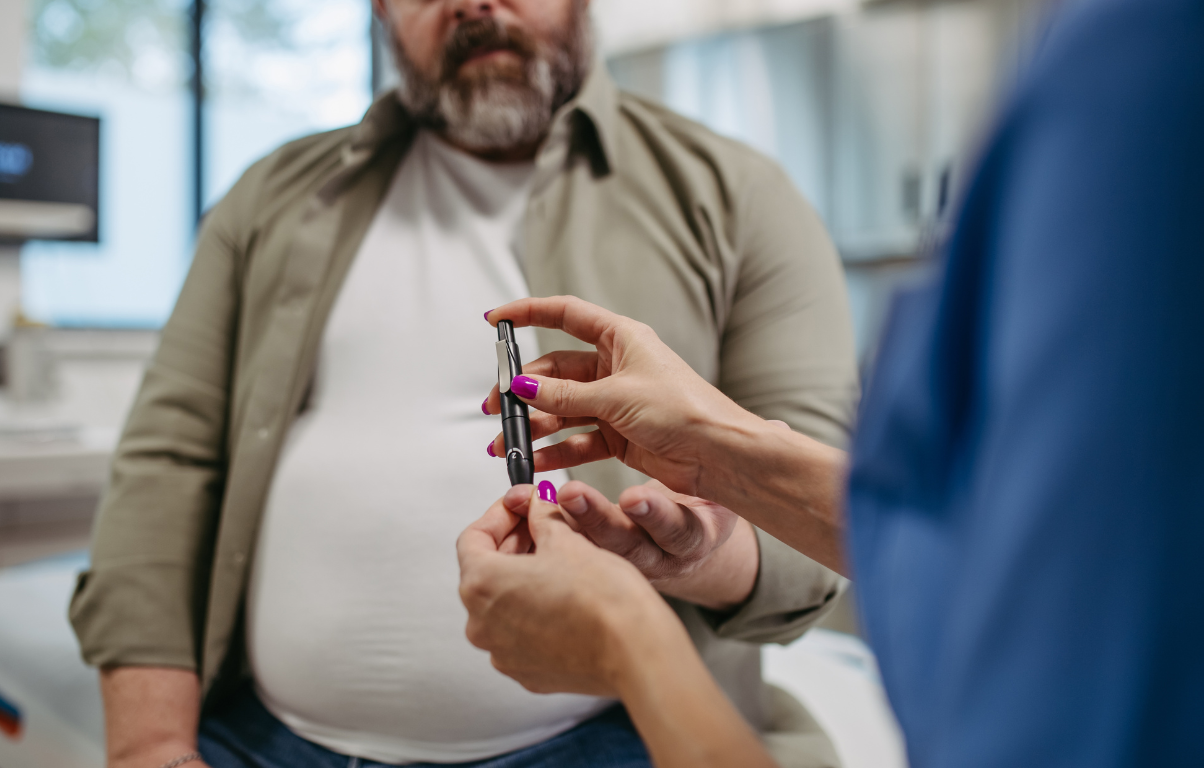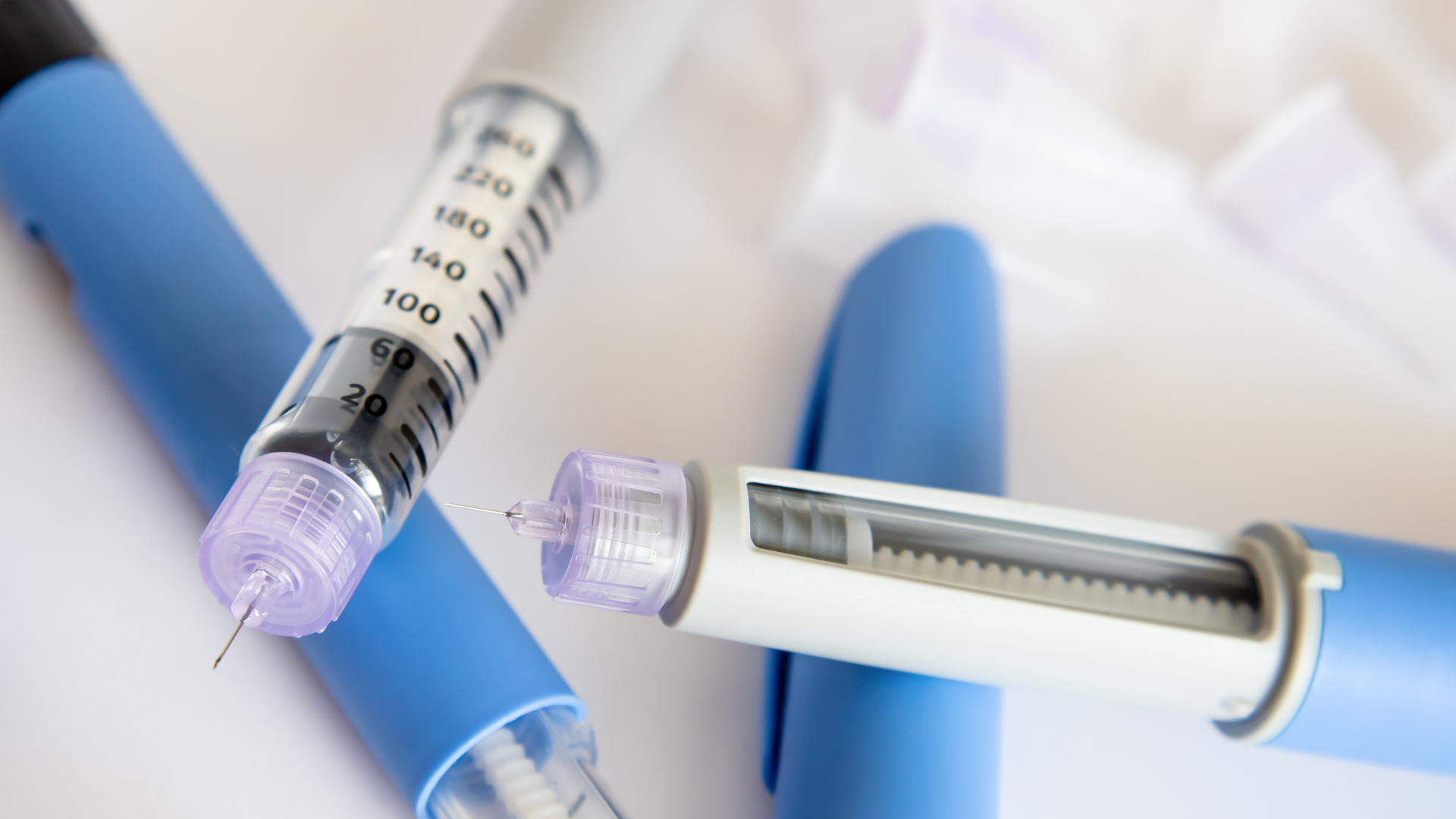Diabetes Raises Dementia Risk — Here's How to Mitigate It

How well you control your blood sugar over time could significantly impact your risk of developing dementia. A study of 374,021 older veterans with diabetes uncovered a crucial connection between long-term blood sugar management and cognitive health.1 The researchers found that maintaining stable blood sugar levels within personalized target ranges was associated with a lower risk of Alzheimer's disease and related dementias.
This isn't just about avoiding extreme highs and lows — it's about consistency over time. The study used a measure called hemoglobin A1c (HbA1c) time in range (TIR), which looks at how often your blood sugar stays within your recommended target over a three-year period. The higher your HbA1c TIR, the lower your risk of dementia.2 The findings add to a growing body of research linking diabetes with Alzheimer’s disease.
Diabetes Takes a Toll on Your Brain Health
The study revealed that individuals with the lowest HbA1c TIR had a 19% higher risk of developing dementia compared to those with the highest TIR.3 Participants who maintained a higher percentage of time (at least 60% or greater) with A1c levels in their target range had a lower risk of Alzheimer's disease and related dementias. Conversely, dementia risks were particularly increased when A1c levels were mostly below the target range.
The HbA1c time in range measure captures the big picture of your glucose management over years. Think of it as a report card for how consistently you're hitting your personalized targets. This approach recognizes that stability is key — wild swings in blood sugar, even if your average looks good, could be putting your brain at risk.
The researchers found that patients with the highest HbA1c TIR (meaning their blood sugar stayed within target range 80% of the time or more) had the lowest risk of developing dementia.
This suggests that smoothing out those blood sugar peaks and valleys could pay off in terms of cognitive protection. While continuous glucose monitoring devices are becoming more common, this study shows that even standard HbA1c tests, when looked at over time, provide valuable insights into your long-term blood sugar stability.
Prediabetes: A Silent Threat to Your Brain
You might think you're in the clear if you don't have full-blown diabetes, but research published in Diabetes Care shows that even prediabetes ages your brain prematurely.4 The study found individuals with prediabetes had brains that appeared about half a year older than their actual age. While this may seem small, it's a significant warning sign.
The most recent stats show that 38.0% of all U.S. adults had prediabetes, based on their fasting glucose or A1C level. This statistic comes from the National Diabetes Statistics Report by the CDC, which used data from 2017 to 2020. The report also states that an estimated 97.6 million adults aged 18 years or older had prediabetes in 2021.5 But the real stats are far worse. It is likely over 99% of the population has insulin resistance which is the precursor to prediabetes.
Fortunately, we have a powerful tool to measure insulin resistance: the HOMA-IR test. Developed in 1985, this test combines fasting glucose and insulin levels to give us a clear picture of how well your body responds to insulin. It’s a reliable and practical test for insulin resistance and prediabetes.
What sets the HOMA-IR apart is its accessibility and reliability. Unlike complex, invasive procedures, this test needs only a blood draw. This makes it convenient for patients and practical for use in clinics. The HOMA-IR gives a clear measure of insulin resistance. It helps people and doctors spot metabolic issues early and track improvements over time. The HOMA-IR formula is as follows:
HOMA-IR = (Fasting Glucose x Fasting Insulin) / 405, where
- Fasting glucose is measured in mg/dL
- Fasting insulin is measured in μIU/mL (microinternational units per milliliter), and
- 405 is a constant that normalizes the values
If you’re using mmol/L for glucose instead of mg/dL, the formula changes slightly:
HOMA-IR = (Fasting Glucose x Fasting Insulin) / 22.5, where
- Fasting glucose is measured in mmol/L
- Fasting insulin is measured in μIU/mL, and
- 22.5 is the normalizing factor for this unit of measurement
So, what’s considered a healthy HOMA-IR score? Anything below 1.0. If you’re above that, you’re considered insulin resistant. The higher your values, the greater your insulin resistance. Conversely the lower your HOMA-IR score, the less insulin resistance you have, assuming you are not a Type 1 diabetic who makes no insulin. Insulin resistance often exists long before obvious signs of trouble, silently disrupting your body’s balance and setting the stage for serious conditions later.
Incidentally, my personal HOMA-IR score is 0.2, which is incredibly low. In fact, it’s the lowest Dr. Cate Shanahan, who introduced me to HOMA-IR, has ever seen. The reason for this is that my body became more efficient at burning fuel, due to the increased availability of glucose. I consumed extra carbohydrates, which gave my cells energy. They could function better, which improved my metabolic health.
Men with Diabetes Face Accelerated Brain Aging
If you're a man with diabetes or other metabolic health issues, your brain, in particular, might be aging faster than you think. The study revealed the impact of diabetes on brain age was more pronounced in men compared to women.
For instance, prediabetic men had brains that appeared 0.75 years older than their actual age, while for women, the difference was only 0.27 years.6 This gap widened further with diabetes, where men's brains aged 2.63 years faster compared to 1.76 years for women. Moreover, individuals with two or more cardiometabolic risk factors like obesity, high blood pressure, or abnormal cholesterol levels showed even greater brain aging effects from diabetes and prediabetes.
The researchers used advanced brain imaging techniques to estimate "brain age," considering not just brain volume but also factors like white matter integrity, functional connectivity, and how the brain responds to tasks. This comprehensive approach gives a more nuanced understanding of brain health.
It's not just about preventing major cognitive decline or dementia—iit's about maintaining optimal brain function as you age. The study also considered genetic factors related to Alzheimer's disease risk, showing that the effects of diabetes on brain aging persisted even when accounting for genetic predisposition.
The good news is that prediabetes is reversible. By taking action now to improve your health, your brain gains from premature aging. The study found that people with diabetes who maintained a healthy lifestyle—ccharacterized by regular physical activity, not smoking, and moderate or no alcohol consumption—hhad brains that appeared only 0.78 years older than their actual age.
In contrast, those with diabetes and an unhealthy lifestyle had brains aging 2.46 years faster—tthat's a difference of 1.68 years.7 This suggests that healthy habits counteract some of the negative effects of diabetes on your brain. Even if you don't have diabetes, a healthy lifestyle was associated with younger brain age across all groups.
So, if you're dealing with diabetes or prediabetes, don't just focus on your blood sugar — pay attention to your overall lifestyle. Simple changes like improving your diet, daily walks, and maintaining a healthy weight help maintain a younger, healthier brain.
The Diabetes-Dementia Connection Grows
Multiple studies have found that people with Type 2 diabetes have a significantly higher chance of cognitive decline and dementia compared to those without diabetes. One meta-analysis showed diabetics had a 73% increased risk of all types of dementia and a 56% higher risk of Alzheimer's disease specifically.8
Chronic high blood sugar damages blood vessels and nerves throughout your body, including in your brain. This may contribute to reduced blood flow and changes in brain structure that set the stage for cognitive problems. Chronic high blood sugar also leads to oxidative stress, inflammation and the formation of advanced glycation end products (AGEs) that damage tissues.9
Both Type 2 diabetes and Alzheimer's disease are characterized by chronic, low-grade inflammation throughout the body. This persistent inflammatory state can damage tissues, disrupt normal cellular processes, and contribute to disease progression. In diabetes, inflammation is closely tied to insulin resistance and metabolic dysfunction.
Similarly, neuroinflammation is increasingly recognized as a critical component of Alzheimer's disease pathology. The inflammatory processes in these conditions share many common pathways and mediators, including proinflammatory cytokines like TNF-α, IL-6, and IL-1β.10 This inflammatory overlap helps explain one way that diabetes increases dementia risk.
In your brain, this may contribute to neuronal injury, reduced plasticity and impaired function of your blood-brain barrier. Insulin resistance also appears to play a major role, as it disrupts normal insulin signaling in your brain that's important for cognitive function. The combined effects of these various mechanisms may explain why diabetes increases dementia risk so significantly.
Understanding these connections provides important insights into how you can protect your brain health.

The Gut-Brain Axis: A Hidden Player in Dementia
The gut-brain axis is another crucial factor in the diabetes-dementia connection. This bidirectional communication system between your gut and brain plays a significant role in both metabolic and cognitive health. Your gut microbiota, the trillions of microorganisms living in your intestines, are key mediators in this relationship.
In diabetes, there's often a state of gut dysbiosis — an imbalance in the microbial community. This dysbiosis leads to increased intestinal permeability, often called "leaky gut," allowing harmful substances to enter your bloodstream and trigger systemic inflammation.
Similarly, alterations in gut microbiota composition have been observed in Alzheimer's disease patients. These changes affect the production of neurotransmitters, immune responses and even the integrity of your blood-brain barrier. Intriguingly, some gut bacteria produce compounds that mimic amyloid proteins, potentially exacerbating Alzheimer's pathology.11
Meanwhile, fostering beneficial oxygen-intolerant bacteria in your gut, including important species like Akkermansia, strengthens your intestinal defenses and promotes overall wellness. These beneficial bacteria ferment dietary fibers to produce short-chain fatty acids (SCFAs), particularly butyrate.
Notably, butyrate-producing bacteria like Eubacterium and Eisenbergiella were associated with lower Alzheimer's risk.12 Butyrate nourishes your colonic epithelial cells, reinforcing the intestinal barrier. SCFAs also stimulate mucin production, creating a protective shield against harmful bacteria.
Diets rich in polyunsaturated fats (PUFAs), including linoleic acid found in seed oils, destroy your gut health, leading to a cascade of harmful effects, from Type 2 diabetes
Endotoxemia Threatens Intestinal Integrity and Systemic Health
The delicate balance of your gut microbiome has far-reaching implications for metabolic and cognitive function and longevity. A reduction in oxygen-intolerant bacteria leads to leaky gut. These microorganisms are essential for breaking down complex plant fibers and producing health-promoting fatty acids. However, they require a specific oxygen-free environment to thrive, which is maintained by robust cellular energy production.
Modern lifestyle factors, including the consumption of processed seed oils, exposure to synthetic endocrine-disrupting chemicals and pervasive electromagnetic fields (EMFs), impair your cells' ability to generate energy efficiently. This energy deficit makes it challenging to sustain the oxygen-free gut environment necessary for these beneficial bacteria to flourish.
As your gut barrier weakens, it allows various harmful substances to breach your intestinal wall and enter your bloodstream. This intrusion triggers a systemic inflammatory response, with wide-ranging effects on your health, including impacts on brain function. Of particular concern is the proliferation of oxygen-tolerant bacteria, which are not ideally suited for the gut environment.
These microorganisms produce a potent form of endotoxin known as lipopolysaccharide (LPS). When LPS enters your bloodstream through a compromised gut barrier, it leads to a severe condition known as endotoxemia, which may progress to septic shock — a state of systemic inflammation that’s sometimes fatal.
The severity of endotoxemia lies in its ability to disrupt mitochondrial function. Mitochondria, the cellular powerhouses, are particularly vulnerable to the effects of endotoxins. This mitochondrial assault has devastating consequences for overall health. The chronic, low-grade inflammation resulting from these gut-derived toxins is believed to contribute significantly to metabolic dysfunction.
This metabolic disruption may set the stage for various chronic diseases, including Type 2 diabetes and neurodegenerative disorders like Alzheimer's. In fact, the disturbance of your gut microbiome and the resulting leaky gut syndrome are increasingly recognized as foundational factors in a wide array of health conditions.
Addressing these issues requires a holistic approach focused on enhancing mitochondrial function and fostering a healthy gut ecosystem. By promoting the growth of beneficial bacteria and mitigating the harmful effects of endotoxins, you can tackle the root causes of inflammation and metabolic dysfunction.
This strategy offers a more comprehensive approach to preventing and managing chronic diseases, including dementia and diabetes, rather than targeting the removal of protein aggregates in the brain.
As research in this field progresses, the intricate connections between gut health, systemic inflammation, mitochondrial health and cognitive function continue to unfold, highlighting the importance of maintaining intestinal integrity for overall well-being and longevity. By taking a proactive, holistic approach to your metabolic and brain health, you may be able to significantly reduce your risk of cognitive decline and dementia as you age.
Healthy Bites















